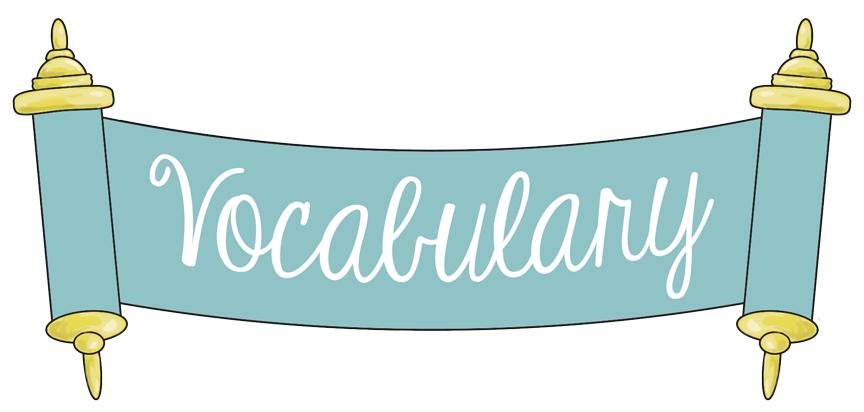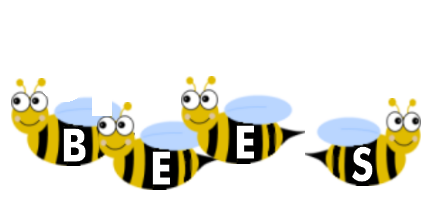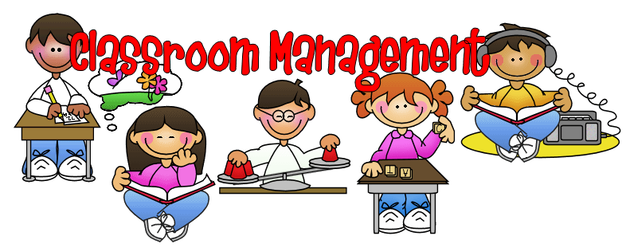Words every teacher must know
blend (vb) — to draw individual sounds together to pronounce a word, e.g. s-n-a-p, blended together, reads snap
cluster — two (or three) letters making two (or three) sounds, e.g. the first three letters of 'straight' are a consonant cluster
digraph — two letters making one sound, e.g. sh, ch, th, ph.
vowel digraphs comprise of two vowels which, together, make one sound, e.g. ai, oo, ow
split digraph — two letters, split, making one sound, e.g. a-e as in make or i-e in site
grapheme — a letter or a group of letters representing one sound, e.g. sh, ch, igh, ough (as in 'though')
grapheme-phoneme correspondence (GPC) — the relationship between sounds and the letters which represent those sounds; also known as 'letter-sound correspondences'
mnemonic — a device for memorising and recalling something, such as a snake shaped like the letter 'S'
phoneme — the smallest single identifiable sound, e.g. the letters 'sh' represent just one sound, but 'sp' represents two (/s/ and /p/)
segment (vb) — to split up a word into its individual phonemes in order to spell it, e.g. the word 'cat' has three phonemes: /c/, /a/, /t/
VC, CVC, CCVC — the abbreviations for vowel-consonant, consonant-vowel-consonant, consonant-consonant-vowel-consonant, which are used to describe the order of letters in words, e.g. am, ham, slam.
http://www.literacytrust.org.uk/resources/practical_resources_info/1032_phonics_glossary
"If we teach today's students as we taught yesterday's, we rob them of tomorrow" John Dewey
Sunday, November 8, 2015
Saturday, November 7, 2015
Presenting new vocabulary
Further techniques that you may use to introduce new vocabulary include:
Miming
Mime the word to be introduced. For instance, to present sing, pretend you are singing and ask students to guess the meaning of the word.
The choice of technique depends on the type of word or expression. For example, it may be easier to describe an action verb through miming, and not through synonym or definition.
http://www.expresspublishing.co.uk/elt/upstream/newvocab.html
How to Teach Question Structures
Teachers often give students plenty of time to practice answering questions without dedicating sufficient practice time to asking them. For example, Crisscross is a very simple warm up activity where students answer questions such as “How’s the weather?” but after nearly a year of doing this activity, students may struggle to come up with the correct question for the answer “It’s sunny!” Students can become accustomed to hearing key words in questions, in this case weather, and answering correctly without paying any attention to the question’s structure.
Here are some ideas to help students focus on this more.
So, How Do I Teach Question Structures?
- 1Introduce Questions and Answers Together
During the introduction of new materials, you can ask the target question when trying to elicit vocabulary. This way, students will hear it while they are focusing on the structure of the answer and after practicing the target answer you can go back and do some pronunciation practice with the question too. Question and answer structures are normally introduced together because for example “How’s the weather?” and “It’s ~.” are a pair and learning one without the other is not very beneficial. - 2Practice Them Together, Too
Practice activities should also include both structures. For speaking practice this is easy because interview activities and model dialogues will certainly include both. Written exercises usually make students focus on answering the questions and not on the questions themselves. For structures where students have to compose their own responses such as “What’s your favorite sport?” it makes sense that students would be more concerned with what they should say in response. On quizzes, exams, and in real life however, students are going to need to be able to ask as well as answer questions so include some activities that draw attention to a question’s word order. You can do this by adding a section of answers where students have to write the question for each answer. If this is too challenging you can have students match questions with answers or, better yet, fill in blanks within the question. These exercises will help students practice question structures more extensively. - 3Production Stage
During production exercises, questions are usually provided so that students have some guidelines or organization for their activities. Model dialogues and role-plays can be adapted to give students more practice forming questions. You can also play Fruit Basket by asking the student in the middle to say a question and having everyone who would answer “Yes” change seats. Example questions might be “Do you like blue? Have you eaten sushi? Are you a student?” This can be used for many different question structures and levels. You could play Fruit Basket as a review activity at the end of the first lesson using the answer structure and as a warm up in the next lesson using the question structure. Students may struggle at first but the more familiar they are with asking questions the easier it will be for them to learn new ones. - 4Focus on Question Words
Make questions part of general review material and activities before exams or quizzes by dedicating a section to them. If you have a study guide for students, make sure that students write their answers to questions as well as complete the questions. This will make them more aware of often overlooked words in questions. For “How’s the weather?” students may be tempted to say something similar to “What weather?” as the target question because many questions in beginning and intermediate English lessons start with what and because they recognize the word weather as the word that links it to the answer. When creating blanks in the questions, leave in words such as weather and focus more on who, what, where, when, why, and how as well as words such as your in questions like “What’s your favorite sport?” When conducting review games, you can include a section where students have to give the question for the answer provided. This may be the most challenging section of the game so awarding extra points for correct answers may be appropriate.
While many classes concentrate on having students answer questions, real life does not work this way.
Students are going to have to be able to both ask and answer questions when given the opportunity to speak English outside the classroom so teachers need to devote plenty of time to question related activities. Once your lesson plans start including more of these, students will have better success remembering and using questions.
http://busyteacher.org/4121-how-to-teach-question-structures.html
http://busyteacher.org/4121-how-to-teach-question-structures.html
Learn English Tenses (Lesson 1)
My lovely teachers. Here's the first lesson of English grammar, that I'm going to test you on next Tuesday during our staff meeting.
Study well
All the best
Present Simple vs Present Continuous - Learn English Tenses (Lesson 1)
Spelling Activities
Learning how to recognize and spell words will help your child become a better reader. You can help your child practice reading and spelling short-vowel words. Below are some activities to help make learning fun!
Making Words : Write the following letter combinations on index cards: an, ap, at, ed, en, et, ib, ip, og, op, ug, un. Then, give your child five consonant letter cards—for example, b, c, r, d, l. Ask your child to choose a consonant card and add it to a combination card to make a word.
Sort the Cards : Write short-vowel words on note cards. Ask your child to sort the cards according to the vowel sounds.
Unscramble the Word : Give your child three letters, and ask him or her to unscramble the letters to make a word. Explain that sometimes you can make more than one word with the same three letters. For example, with the letters a, p, and n, your child can make the words pan and nap.
Rhyming Pictures : Make a list of rhyming words that end with an, ap, at, ed, en, et, ib, ip, og, op, ug, un. Ask your child to look in magazines and cut out a picture for a rhyming word. Encourage your child to find at least two rhyming words for each ending vowel-consonant combination.
Beat the Clock : Set a timer and see how many words your child can write down in one minute. Have your child write down as many words as he or she can spell with the following endings: ack, ath, est, ock, ump, and, ing, ick, ock, ish, ent.
Spell the Correct Word : Write a word for your child on a piece of paper that includes letters similar to the ending letters mentioned in Beat the Clock. Then, say a new word and ask your child to change a letter to make the new word. For example, write the word pick and ask your child to make it pack. Below are some more examples to help get you started:
Tips for Reading and Spelling Chart
Play a Guessing Game : To begin, use the word endings ack, and, ath, est, ick, ill, ing, ock, and ump to create words. Write down a blank line for each letter in the word. For example, for a four-letter word, write _ _ _ _. Ask your child to guess letters to create the word. If your child guesses a correct letter, write it on the correct line. If not, make a list of the letters missed. When your child fills in enough letters to guess the word, he or she should tell you the word and the correct spelling. Now use the following beginning blends to create more words: st, cr, fr, sw, cl, dr, pr, sk, sl, pl, gl, br, tr, sp, fl, sh, ch, th, wh. Take turns making up words with your child and guessing the correct letters.
Word Search : Create a word search puzzle for your child (write ten letters across and five down). Include words that have the following vowel combinations: ai, ay, ee, ea, ie, oa, ow. Ask your child to circle the words. If your child needs assistance, say the word aloud, then ask him or her to repeat the word and find it in the puzzle. Below is an example.
Word Search Example
Tic Tac Toe Spelling : Draw a tic tac toe board. Instead of using an X or O to mark a square, create words that end with the following letters: ame, ake, ate, ave, ive, ice, ite, ine, one, ose, ail, eep, each, eat, oat, ain. Have your child write a word in one of the squares, and circle the word so you both know which ones belong to him or her. The first person who gets three in a row is the winner.
Magnetic Spelling : Give your child magnetic letters and ask him or her to spell words with long vowel sounds that end in silent e—for example, rake, kite, hope, mute. Set a timer and see how many words your child can put together in one minute for each vowel combination. Help your child learn how to put letters together to make words. This time, focus on words that have irregular vowel patterns with blends and digraphs. Below are some words to help get you started. Use the activities below to help your child practice spelling and become a better reader.
Irregular Vowel Patterns with Blends and Digraphs
Spelling Concentration : On each of 12 index cards, write one of the following letters or letter combinations: st, b, f, l, ou, c, ar, ird, ork, aw, t, oy. Turn all of the cards face down and play a matching game to find two cards that make a word. When you find a match, remove those cards from the game. Add more cards as you like!
Unscramble the Words : Mix up the letters of the words in the box above, and ask your child to unscramble as many words as he or she can in one minute. Setting a timer can help motivate your child to work more quickly.
Guess the Word : Think of a word, and write down a blank line for each letter. For example, for a four-letter word, write _ _ _ _. Ask your child to guess letters to create the word. If your child guesses a correct letter, write it on the correct line. If not, make a list of the letters missed. When your child fills in enough letters to guess the word, have your child tell you the word and the correct spelling. Take turns making up words with your child and guessing the correct letters.
http://www.jumpstart.com/common/spelling-activities
Elementary Classroom Management Survival Tips
- Make two sets of name tags – one for the child's table space or desk, and one for the child to wear around the neck.
- Hang name tags on a hook by the door.
- Have a Weekly Room Helper's Chart. Put children in charge of jobs such as:
- straightening the books (librarian)
- taking notes to office or another teacher (messenger)
- cleaning up the floor – all children should do this at the end of the session (room inspector)
- general teacher's helper (teacher assistant) and many more jobs.
- Always evaluate the day with the children before they go home. Praise them for jobs well done and mention things that will need to be worked on tomorrow.
- Establish a routine. Children thrive on a schedule.
- Don't speak when children aren't listening and ready. Wait.
- Establish a signal for getting the group's attention:
- turn off the lights
- clap a pattern with your hands
- say “Freeze!” and everyone halts right where they are, like a statue. Then say “Melt!” when you are ready for them to move again.
- Establish and discuss room rules and consequences of misbehavior.
- Post room rules and consequences of misbehavior.
- Keep a large, clear, see-through plastic jug on a table or countertop. When students are being good workers, drop a nut (walnut) or (chestnut) or little pebble inside with much ceremony and praise. When the jug is filled, it's time for a treat (food, extra playtime, an extra story, a game). Then empty the jug and begin again.
- Special food treats like cookies, popcorn, or small candies work well for rewarding modified behavior.
- Select a different student each class to be the teacher's partner as line leader. Be sure to hold hands.
- Establish good listening habits for story time. Sometimes we read and listen, and sometimes we read and discuss, but we always listen.
- Send a child to a nearby seat (behind the audience) during story time if he or she cannot conform to listening standards. That way, the child is away from the group but can still hear the story.
- Don't give the child more work as punishment, and don't take away the child's play time as punishment. Work with your rules and consequences instead.
- Invite a good student-citizen to sit at the teacher's desk during snack time or work time, for instance. The especially rewards a good citizen.
- Give a special certificate to good workers.
- Keep the lights off and heads down for a rest when noise level is too high. Tell them, "Noisy boys /girls are tired boys /girls, and your noise is telling me that you're tired and need a nap. So OK, that's what we'll do."
- Speak with a soft voice and children will usually respond in kind. However, pretend to take a very loud voice out of your pocket and use it, and then put it back-with a dramatic flair. Children don't like the loud voice, and you can assure them that you don't either, so you want to keep it in the pocket with their help.
- Use puppets to help with classroom management. Puppets can whisper in the teacher's ear, and they can write messages to the class.
- Compliment leadership in students. "Oh, I like the way Dana is ready!" will cause everyone to turn to look at the ready student and to get ready also.
- Use the same standards for everyone – no favorites!
- Over-plan for the day. (If you find that you have time on your hands, you will need to work on additional circle time activities, learning games, or alphabet and number activities.)
- Have a little broom and dustpan handy for clean-up.
- Use your eyes--look directly at children when speaking to them. Use the "eyes in the back of your head" to ward off potential problems.
- Use nonverbal communication to send positive and negative messages to the students (smile, wink, nod, give a thumb's up, raise an eyebrow, put a finger to your lips for quiet, and so on).
- Remember, the role of the teacher is to lead. Children follow the leader. If the teacher does not step forward as a strong leader, the children will follow the one who does and unfortunately, that can be a noisy child who is acting out.
- Communicate with a child behaving outside acceptable boundaries. Often a child who is acting out may be doing it because she or he does not know the behavioral boundaries. Take that child aside and make sure he or she understands the common rules. Reassure the child that you know she or he can do well.
- Find something to like and enjoy about each child, and praise it.
- Tell children when they're doing well. Tell them when they've done well. Tell them if they're not living up to the expectations set forth in the classroom or building goals.
- Employ The Magic Touch – touch children, hold their hand or smile at them.
- Keep in mind that your elementary students are “works in progress.” They're depending on YOU. Have a kind heart and a firm will. Develop patience. Never hold a grudge! Each day is a new day!
https://www.teachervision.com/pro-dev/classroom-management/6752.html?page=2
How Students Learn
How Students
Learn
Laws of Learning
There are certain laws that govern
the learning process. These laws apply to any student at any grade and in any
subject area. Just as important, they are also supportive of what we know about
brain growth and development. Although they have direct application for you as
a classroom teacher, you'll note they are also applicable to adults who want to
learn, too.
·
Law of readiness. Students learn more easily when they have a desire to learn.
Conversely, students learn with difficulty if they're not interested in the
topic.
·
Law of effect. Learning will always be much more effective when a feeling of
satisfaction, pleasantness, or reward is part of the process.
·
Law of relaxation. Students learn best and remember longest when they are relaxed.
Reducing stress increases learning and retention.
·
Law of association. Learning makes sense (comprehension) when the mind compares a new
idea with something already known.
·
Law of involvement. Students learn best when they take an active part in what is to
be learned.
·
Law of exercise. The more often an act is repeated or information reviewed, the
more quickly and more permanently it will become a habit or an easily
remembered piece of information.
·
Law of relevance. Effective learning is relevant to the student's life.
·
Law of intensity. A vivid, exciting, enthusiastic, enjoyable learning experience is
more likely to be remembered than a boring, unpleasant one.
·
Law of challenge. Students learn best when they're challenged with novelty, a
variety of materials, and a range of instructional strategies.
·
Law of feedback. Effective learning takes place when students receive immediate
and specific feedback on their performance.
·
Law of recency. Practicing a skill or new concept just before using it will
ensure a more effective performance.
·
Law of expectations. Learners' reaction to instruction is shaped by their expectations
related to the material (How successful will I be?).
·
Law of emotions. The emotional state (and involvement) of students will shape how
well and how much they learn.
·
Law of differences. Students learn in different ways. One size does not fit all!
Dimensions of Learning
Teaching and learning occur in
dynamic environments. In these environments, teachers, students, materials,
textbooks, technologies, and social structures are all related and interactive.
Learning and teaching occurs across five basic dimensions:
·
Confidence and independence
·
Knowledge and understanding
·
Skills and strategies
·
Use of prior and emerging experience
·
Critical reflection
These five elements are known as
the dimensions of learning. They cannot be treated individually; instead, they
are dynamically interwoven. They describe the basic elements that must be part
of every classroom learning (and teaching) experience. Students learn best when
these five dimensions are addressed and incorporated into every
teaching/learning experience.
Positive Attitudes and Perceptions About Learning
Attitudes and perceptions affect
students' ability to learn. Learning occurs best when the development of
positive attitudes and perceptions is made part of every learning task.
Students learn to think positively about themselves, their peers, and the
material they are learning.
Here are some suggested classroom behaviors and
practices:
·
Provide
opportunities for students to work together in cooperative groups.
·
Establish
and communicate classroom rules.
·
Use a
variety of ways to engage students.
·
Teach students to use positive self-talk.
·
Provide clear performance levels for tasks.
Acquiring and Integrating Knowledge
Here are some suggested classroom behaviors
and practices:
·
Help students understand what it means to construct meaning.
·
Have students create pictorial representations of information.
·
Help students construct models.
·
Point out common errors and pitfalls.
·
Help students set up a practice schedule.
Extending and Refining Knowledge
For learning to be effective and
meaningful, students should be provided with opportunities to use knowledge in
practical situations. Processing knowledge for greater understanding can be
done through activities designed to help them apply that knowledge.
Try some of these classroom
behaviors and practices:
·
Compare. How are these things alike?
·
Classify. Into what groups could you organize these things?
·
Induce. Based on this information, what is
the likely conclusion?
·
Deduct. What predictions can you make, or
what conclusions can you draw?
·
Analyze errors. How is this information misleading?
·
Construct support. What is an argument that will support this claim?
·
Abstract. What is the general pattern underlying this information?
·
Analyze perspectives. What is the reasoning behind this perspective?
Using Knowledge Meaningfully
Students learn best when they need
knowledge to accomplish a goal they consider important. Six kinds of thinking
processes can be used to encourage students to use knowledge meaningfully:
·
Decision-making
·
Problem-solving
·
Invention
·
Experimental inquiry
·
Investigation
·
Systems analysis
Productive Habits of Mind
Teachers can help students develop
the mental habits that will enable them to learn on their own. Instruction to
foster habits of mind includes both short-term and long-term practices.
Here are some suggested classroom
behaviors and practices:
·
Think critically. Be and see accurately. Be open-minded.
·
Think creatively. Push the limits of one's knowledge. Find new ways of looking at a
situation.
·
Self-regulate. Be aware of one's own thinking. Evaluate the effectiveness of
one's own actions
Subscribe to:
Comments (Atom)











